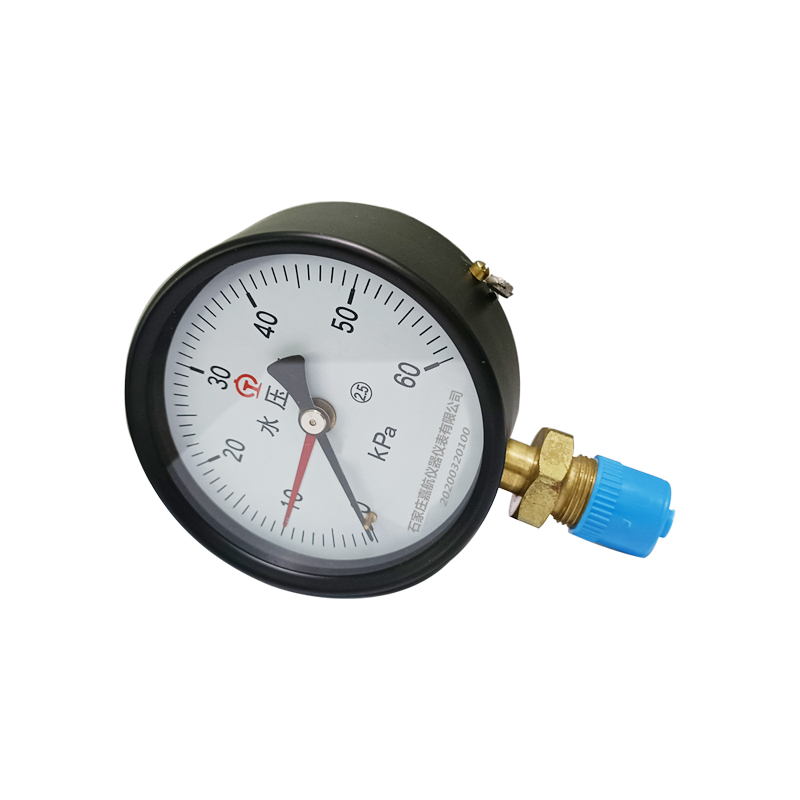
Sep . 02, 2024 19:02 Back to list
Differential Pressure Gauge Bourdon Tube Manufacturer | Precision Measurements
Understanding Differential Pressure Gauge with Bourdon Tube Technology
Differential pressure gauges are essential instruments utilized in various industries to measure the difference in pressure between two points in a system. Among the various technologies available for pressure measurement, the Bourdon tube is one of the most widely used mechanisms in differential pressure gauges due to its reliability, durability, and accuracy.
The basic principle behind a Bourdon tube is straightforward. This tube is typically made of a flexible metallic material and is bent into a C-shape. When pressure is applied, the tube tends to straighten out. This movement is then translated into a mechanical movement that drives a needle on a calibrated dial, providing a visual indication of pressure difference. In differential pressure gauges, two Bourdon tubes are often used to measure the pressure from two different points, and the gauge displays the difference.
Manufacturing a differential pressure gauge with a Bourdon tube involves several critical steps. It starts with selecting the appropriate material for the Bourdon tube, which needs to withstand varying pressure levels and environmental conditions. Common materials include stainless steel, brass, and phosphor bronze, chosen for their strength and resistance to corrosion.
Once the material is selected, the tube is formed into the desired shape. Precision is crucial in this process, as any imperfections can lead to measurement inaccuracies. After forming, the Bourdon tube undergoes rigorous testing to ensure it operates correctly under specified pressure ranges. This includes both static and dynamic testing to simulate real-world operating conditions.
differential pressure gauge bourdon tube factory

Assembling the gauge entails meticulous integration of the Bourdon tube with other components, including the movement mechanism, dial, and housing. Each element must be secured properly to prevent leakage and ensure accurate readings. After assembly, the entire system is calibrated against known pressure standards, which is vital for enhancing reliability.
Differential pressure gauges utilizing Bourdon tube technology find applications across various sectors, including HVAC (heating, ventilation, and air conditioning), water treatment, and pharmaceuticals. In HVAC systems, these gauges monitor airflow and ensure proper operation, while in water treatment facilities, they help track filter conditions.
One of the noteworthy advantages of Bourdon tube-based differential pressure gauges is their simplicity and mechanical nature, requiring minimal maintenance compared to electronic alternatives. They are typically resilient to shocks and vibrations, making them suitable for harsh operational environments.
In conclusion, differential pressure gauges equipped with Bourdon tube technology are crucial instruments for ensuring proper operational conditions across multiple industries. Their robust design, accuracy, and ease of use make them a preferred choice for professionals seeking reliable pressure measurement solutions. As industries continue to evolve, the demand for such gauges remains significant, reinforcing the importance of precision instruments in modern engineering and technology.
-
High-Precision Mass Diaphragm Pressure Gauge - Reliable & Durable Solutions
NewsJun.10,2025
-
Explain Diaphragm Pressure Gauge Expert Guide, Top Manufacturers & Quotes
NewsJun.10,2025
-
Affordable Differential Pressure Gauge Prices in China Top Manufacturers
NewsJun.10,2025
-
Reliable Water Fire Extinguisher Pressure Gauges for Safety
NewsJun.10,2025
-
Durable Diaphragm Protection Pressure Gauges Get Quote
NewsJun.09,2025
-
WIKA Differential Pressure Gauge with Switch Reliable Monitoring & Control
NewsJun.09,2025
